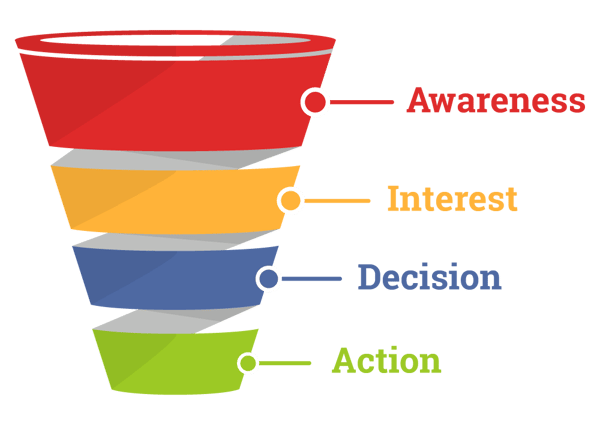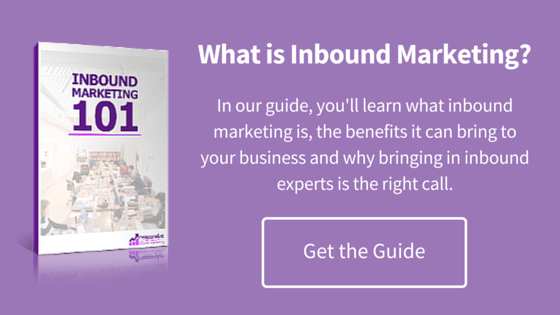Planning for 2020: How to Set Your Marketing Goals in These 5 Steps
A new year, quarter or month is a chance for a company to identify opportunities for growth. And when it comes to building a business roadmap, you can’t achieve your goals without a good marketing plan.
If you want to be successful in 2020 (and beyond), you need to set clear marketing goals. Things like what tools and tactics to use to generate leads and attract more customers, where to spend your marketing budget and what steps to take to get to where you want to be.
But, what makes a good marketing goal? And how do you start? Let’s find out.
In this post, we’ll also take a look at what to focus on to take your marketing and business to the next level.
SMART Goals That Will Make You a Better Marketer in 2020
You’ve probably heard of the classic SMART acronym. Marketing is all about goals, and setting them doesn’t need to be difficult. Make them specific, measurable, attainable, relevant and timely.
Specific: Define your goal clearly. It should answer the 5 W’s (who, what, when, where and why).
Measurable: Measure your progress and success with target numbers and dates.
Attainable: Be realistic; your goal needs to be achievable.
Relevant: Your goal should relate to your overall business goals and factor in current trends in your industry.
Timely: Your goal should have an end date.
How Do You Start?
Start by assessing what you’ve already got - from SEO to social media to content marketing - and then finding ways to optimize optimize each. Here are some helpful tips.
Your SEO Plan
More traffic, leads and sales. That’s what every business wants, right? Search Engine Optimization (SEO) is a continuous process to increase your website’s visibility on search engines, helping you generate more traffic and sales.
It involves optimizing your site’s SEO tactics to increase its ranking on search engines. Here are some SEO questions to ask yourself.
- User experience: Is your website responsive, fast and mobile-friendly?
- Keywords: Have you performed keyword research to see what popular phrases your potential customers are searching for and related to the content you’re posting?
- Calls to action: Are your CTAs actionable, compelling and placed prominently on your pages?
Your Social Media Plan
Social media is an essential part of any marketing strategy. Not a social media pro? You don’t have to be. To win at social in 2020, your strategy needs to stay current.
Consider adding the following elements to your plan (if you haven’t already):
- Video: 56% of people use Facebook, Twitter, Instagram, etc. to watch videos. You can use videos for networking, education and product demos.
- Visual content: Plain text doesn’t cut it anymore. Visual content performs way better. That’s because showing is better than telling. Improve engagement using free tools like Canva and Pablo to create images.
- Social e-commerce: Businesses are streamlining the buying process on social media platforms simply by providing people with the option to hit the buy button.
Your Content Marketing Plan
Every content you create starts and ends with your target audience in mind. It’s the part of your marketing that shows what makes you unique and provides value for your intended audience.
When developing your content marketing plan, here are some key things to consider:
- Target audience: Clearly define the specific group of people you want to reach with your message. Find out their common characteristics, like demographics, challenges and behaviors.
- High-quality content: How are you talking to your ideal customer? Make sure the content you’re writing is solving some problem or filling a need.
- Content formats: Education can take on different forms in content marketing - blog posts, videos, eBooks, infographics, etc.
How to Set Marketing Goals Successfully
Step 1: Conduct a SWOT Analysis
A SWOT analysis is a brainstorming technique that helps you understand your strengths, weaknesses, opportunities and threats. The outcome should increase your value to your customers and differentiate your business from the competition.
To start, identify specific areas of your current marketing strategy by asking yourself:
- What are your strongest assets? What unique resources and differentiators do you have?
- What’s not working so well, and what needs improvement?
- How can you maximize new opportunities in the market, including new trends?
- Who are your competitors and what are they doing better than you?
Step 2: Set a Marketing Budget
Although marketing involves a lot of trial and error, the worst thing you can do is spend money you can’t afford to lose. Whether or not your business is well-funded, set your marketing goals based on specific deliverables and spend your dollars wisely.
Make a list of your current operational costs, the platforms you want to market on (LinkedIn Ads, Google Ads, email marketing, SEO, etc.) and the software needed to execute campaigns (CRMs, analytic tools). You’ll need to consider other expenses as well, like hiring marketing experts or an agency to consult or launch your campaigns.
You’ll also need to factor in the costs of “failed” efforts, like a blog post or paid ad that doesn’t convert in the way you had hoped.
Step 3: Define Your Target Persona
You can’t convert prospects from leads to opportunities to customers without starting with the basics. Buyer personas help you understand your customers - who they are, what challenges they face and how they make decisions.
Creating buyer personas helps you set your marketing goals by customizing your marketing approach.
This makes it easier for you to tailor your content to their needs. You’ll know how to address their pain points and solve their problems while also building trust.
Step 4: Outline Your Sales Funnel
The average buyer researches and consumes a lot of content before they reach your website or asks for a consultation. In fact, 89% of B2B researchers use the internet in their research process.
That’s why a well-planned sales funnel is the core for every successful online marketing plan. A sales funnel is a series of steps your prospect takes to buy in to your product or service - awareness, interest, decision and action.

Here are some examples of how marketing can play a role in your sales funnel.
Blogging, paid ads and social media can help build your brand awareness. Opt-in assets are great for attracting customers, like how-to guides and white papers. And for those interested in your product, email marketing is a great way to get people in the decision and buying stage by sending them case studies, demos and webinars.
Step 5: Measure Your Goals
As a final step, it’s important to measure your goals weekly, quarterly and yearly. Get your team involved and track your progress with marketing KPIs (Key Performance Indicators).
Some KPIs to measure are:
- Qualified leads
- Website traffic
- Social media reach and engagement
- Email marketing performance
- Landing page conversions
- Blog post visits
- Sales growth
Looking for more insight? Check out our free eBook, Inbound Marketing 101, to learn more.




